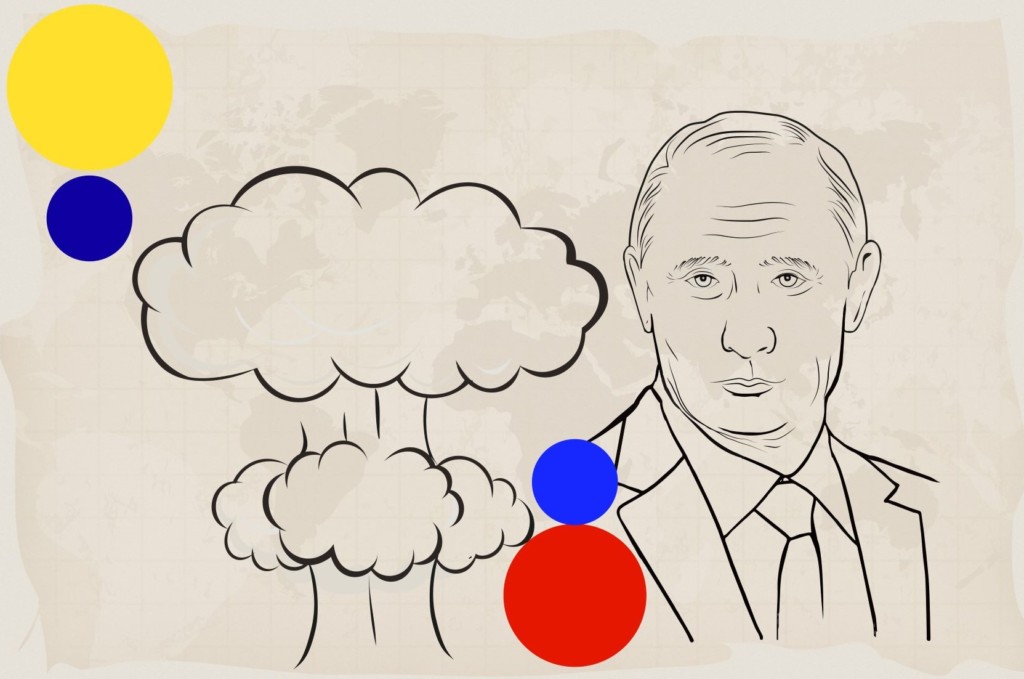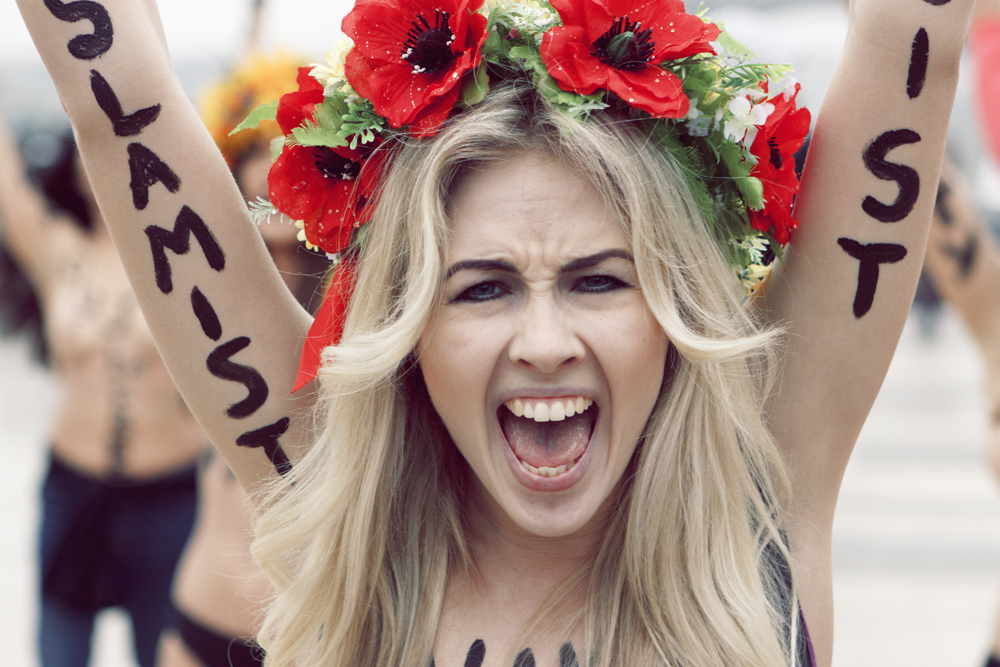
With Germany reunited, the Soviet Union broken up and America comfortably in the driver’s seat, what was NATO’s purpose?
A few pieces of a multifaceted and complicated story
By Matthew Fraser, Editor in Chief
Social media and the news world writ large have been consumed by the senseless invasion of Ukraine Vladimir Putin ordered on February 23. Under the guise of a “special military operation,” Putin sent scores of the nearly 200,000 soldiers he had amassed along the borders into Ukraine. What has followed has been images of heartwrenching destruction and the sheer calamities of war. But what are some of the historic linkages between the two nations, and how exactly has the North Atlantic Treaty Organization (NATO) played into the current situation?
One of the things that Vladimir Putin has insinuated which have caused great concern in the west and Ukraine is the idea that Ukraine owes a debt to Russia and may in fact not be a legitimate country. Part of the root of this idea comes from the shared history and origin of the two nations from Kievan Rus. According to worldhistory.org, Kievan Rus was a federation of states and peoples ruled from what is modern-day Kyiv. The area encompassed by these rulers includes Belarus, Russia and Ukraine with tendrils expanding further north and south as well.
The story as told in the Russian Primary Chronicle is that the Rus peoples—often interpreted as Scandanavian Vikings—were invited to rule the lands by its inhabitants. As the Rus maintained the lands and its peoples, deeper bonds through marriage and culture drew them together. As the medieval kingdom continued from 862 to 1242, there was considerable time for cultural and ethnic connections to be built.
Due to its natural resources and strategic position, Ukraine has been known as the breadbasket of Europe and Russia at different times. In their recounting of the industrial history of Ukraine, the European Route of Industrial Heritage (ERIH) recounts Polish nobility owning land in the modern Ukrainian territorial boundary while 18th-century governments in Moscow extended their rule to the Black Sea for trading and strategic reasons. Around the same time, the Donez Basin—commonly known as Donbas—saw its first iron rolling mill erected with machinery imported from Britain.
The online Encyclopedia of Ukraine divides Polish-ruled Ukraine as Western Ukraine while Slobidska Ukraine was more oriented towards Russian Tsars. As the Russian Empire consolidate more of southern Ukraine under its power industrialization was rapidly outstripped by agricultural advancements save for a few port cities like Odesa. However, by the end of the 18th century, industrial development would begin to spread through Ukraine.
Both ERIH and the Encyclopedia of Ukraine mark the formal abolition of serfdom in 1861 as a major turning point in the modernization of both the Russian Empire and Ukraine’s economy. Throughout the 1870s and 1880s railroads built throughout Ukraine would benefit the region through its reduction in transportation costs. Coal from Donbas helped considerably the advancement of the nation’s economy while the newfound transportation ease helped the export markets of Ukraine open. As these advancements progressed Western and Slobidska Ukraine were linked.
However, the years spanning 1913-1933 were incredibly destructive to the burgeoning nation of Ukraine first due to the effects of WWI then due to its initial independence in 1917 followed by the violent 1920 annexation by the USSR. As explained by the University of Alberta’s Holodomor Research and Education Consortium, quotas and policies levied against the Ukrainian people by the Stalinist government outpaced the economic gains made by the Ukrainians and starved millions more to death.
In a period known as Holodomor—translated as “death by hunger” from Ukrainian—the USSR violently collectivized land and forced farmers to work on the now state-owned farms. The relatively wealthier farmers and all resistors were branded as state enemies and sent to prison labour camps known as gulags. As the quotas climbed higher without being met, the Communist Party responded by fining farmers their planting seeds, meat and even their potatoes. Crackdowns included police forces searching houses and watchtowers to ensure that now crops were kept for the Ukrainian farmers. The cruelty reached such heights that a law was passed to keep Ukrainian peasants from fleeing the country.
Roughly 20 years after the horrors of Holodomor, Nikita Krushchev gifted Crimea to Ukraine in a move that to this day is ill-understood and contested. The decision was announced via Pravda, the official newspaper of the Societ Union. Historian Lewis Siegelbaum wrote on Seventeen Moments in Soviet History, an informational website for the Michigan State University wrote that the decision had been justified at the time by the “economic commonalities, territorial closeness, and communication and cultural links” shared by Ukraine and Crimea. Though Siegelbaum would describe the gift as “essentially meaningless” at the time, it would explode into importance roughly 60 years later.
As the Cold War drew to its end in the 1990s, then-Soviet President Mikhail Gorbachev proposed that the Soviet Union join NATO. As Madeline Roche outlines in her 2019 Time magazine article, the proposal was made during the negotiations with U.S. Secretary of State James Baker that would ultimately reunite Germany. And yet, Gorbachev’s successors in both Boris Yeltsin and Vladimir Putin have floated similar ideas. In 1991, immediately after the fall of the USSR, Yeltsin personally wrote to NATO with this “long-term political aim.” At the time it made sense, NATO had been formed to “Keep the Soviet Union out, the Americans in, and the Germans down;” but with Germany reunited, the Soviet Union broken up and America comfortably in the driver’s seat, what was NATO’s purpose?
Despite the interests of successive Russian leaders, the doors to NATO remained closed in no small part due to the organization’s democratic and human rights requirements. However, NATO itself and NATO member states have signed multiple deals and treaties including the 2002 Russia-NATO council and the currently apropos 1994 Budapest Memorandum.
Signed on December 5, 1994, the memorandum included signatories from the United States, Russia, the United Kingdom and Ukraine. As outlined by CTV News, the memorandum served to help bring Ukraine and other former Soviet Nations into the Treaty on the Non-Proliferation of Nuclear Weapons (NPT)and transfer their nuclear arms to other nations—namely Russia. In turn, the US and UK put forth “security assurances” if Ukraine was invaded and to respect the “Independence and Sovereignty and the existing borders of Ukraine.” However, assurances are not the same as guarantees, acknowledged former US diplomat Steven Pifer who himself participated in the memorandum. A guarantee would have given Ukraine near-identical protection as being a NATO member state which according to Pifer was something he (ostensibly) and other “U.S. officials made clear [was] not on offer.”
The 1994 memorandum was followed by a series of sovereign states joining NATO including the Czech Republic, Hungary and Poland in 1999; Bulgaria, Estonia, Latvia, Lithuania, Romania, Slovakia and Slovenia in 2004; Albania and Croatia in 2009 and Montenegro in 2017. Given that many of those nations border Russia, Putin’s attempts to join NATO make a certain amount of sense.
A 2017 article published on Radio Free Europe/Radio Liberty (RFE/RL) outlined a conversation Putin recalled where he broached the topic of Russia in NATO and was told by then-President Clinton that he had “no objections.” Although, Putin would also recall that the “entire U.S. delegation got very nervous” upon hearing this. The Guardian published an article in November of 2021 in which former Secretary-General of NATO George Robertson recalls Putin demanding preferential treatment into NATO as opposed to waiting “with a lot of countries that don’t matter” to get in. In Robertson’s telling, he includes the statement that Putin wanted “to be part of that secure, stable prosperous west that Russia was out of at the time.” It seems that the failure to join NATO fed Putin’s fear of encirclement.
On February 9, 1990, US Secretary of State James Baker famously told Mikhail Gorbachev that NATO would move “not one inch eastward.” Though this was said, it was not written down or officially promised. As Nato has grown larger and countries like Estonia, Latvia and Lithuania have joined NATO, a hostile circle has ostensibly begun to take shape around Russia in the eyes of Putin and many members of the Kremlin. In 2007, Putin himself said: “I think it is obvious that NATO expansion has no relation with the modernization of the alliance itself or with ensuring security in Europe. On the contrary, it represents a serious provocation that reduces the level of mutual trust,” as reported in an RFE/RL article.
The same article notes that NATO refused to fast-track Georgia and Ukraine into NATO, but assured the two nations that they would have the freedom to eventually join NATO. In the eyes of Putin, this was unacceptable, and four months after the assurance was given, Putin invaded Georgia. Six years later, Putin would invade and annex the same Crimean Peninsula that had been given to Ukraine 60 years earlier. These aggressive military actions were clearly evidence of a broader anger that Putin felt; he would later explain this anger in part by saying: “They have lied to us many times, made decisions behind our backs, placed us before an accomplished fact [of our humilliation].”
Much of Putin’s view of this humiliation comes from his extensive and well-documented disdain for the end of the Soviet Union which he has infamously called the “greatest geopolitical tragedy of the twentieth century.” As David Remnick explained in the New Yorker, when Yeltsin appointed Putin his successor, Putin believed it was his duty to end “a prolonged period of Russian weakness and humiliation.”
Putin has himself argued that his goal is not to rebuild the Soviet Union or recreate a long-gone Russian empire. Putin recently promised Azerbaijani President Ilham Aliyev that he was not attempting to recolonize previous Russian states—according to reports from Russian state media. However, when it comes to Ukraine, Putin seems to believe that there is not even a shred of sovereignty for him to respect.
In a 2008 article in Kommersant (translated approximately as The Businessman) Putin is said to have exclaimed at then-President Bush: “What is Ukraine? Part of its territory is Eastern Europe, and part, and a significant one, was donated by us!” Likewise, in a sprawling and self-indulgent essay Putin works to illustrate his view that the “true sovereignty of Ukraine is possible only in partnership with Russia.” Coupled with the Russkiy Mir foundation—literally translated as “Russian World Foundation”—it becomes clear that though Putin may not wish to reform the Soviet Union itself, he believes he has a right as the heir to Russian glory to certain lands and global influence.
Given the non-exhaustive and admittedly thin recounting of Russian-Ukrainian relations given here and the influence NATO has cast on the relationship, it should be clear that this invasion was long in the making though completely the fault of Vladimir Putin. He was not called on or forced into this invasion. He took this cold-blooded and aggressive step willingly and uncoerced. However, it should also be clear that there is a deep history and connection that must be respected to properly address and end this conflict. Unfortunately, the hand that has the most power to end this is Putin’s.


